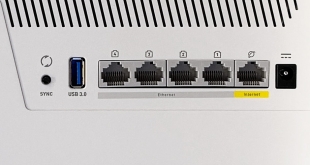The Archer C9 is supplied in a large box which is decorated in a green and white livery. On the front of the box we can see a large image of the router alongside details of the headline features of the router.

Turning the box over reveals an image of the back of the router which is used to illustrate the connectivity options. There is also a more comprehensive list of the features of the router here alongside a table which compares this model with a number of others from the TP-Link range.
Inside the box, we find a standard accessory bundle for a router. It includes the power adapter, a gigabit Ethernet cable, a driver CD, the three antennas for the router and a series of manuals and other paperwork.


The AV500 Powerline WiFi kit is supplied in a smaller version of this box with comparable pictures and information. This kit is supplied with two further Ethernet cables, a driver CD and some documentation.
 KitGuru KitGuru.net – Tech News | Hardware News | Hardware Reviews | IOS | Mobile | Gaming | Graphics Cards
KitGuru KitGuru.net – Tech News | Hardware News | Hardware Reviews | IOS | Mobile | Gaming | Graphics Cards




